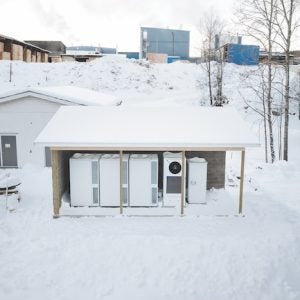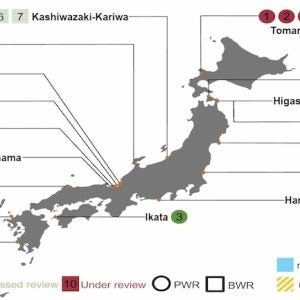Coal remains central to India’s power needs primarily due to energy security issues. Coal accounts for 61% of the country’s installed capacity and 75% of the power generated. An estimated 70.5 GW of coal based power is in the pipeline at various stages of construction. Bowing to international pressures, COP 21 compliance requirements and India’s own initiative to go green, the Indian Ministry of Environment & Forests (MOE&F) has introduced stringent new standards to regulate NOx, SO2, particulate matter and mercury emissions from coal fired power plants. See Table 1.
The new requirements come into effect in 2017, creating a very tight timescale for compliance.
Particulates were the only coal plant emissions controlled prior to the new regulations. The new regulations tighten the existing PM requirements.
The new emissions norms for NOx and SO2, announced in December 2015, are stringent and comparable with standards found in many Western countries.
For example, NOx emission targets will range from 600 mg/Nm3 to as low as 100 mg/Nm3 and will vary depending on the commissioning date and size of the plant. Such targets will have to be achieved in a fairly short period and call for some of the best available control technologies (BACT) to be installed at Indian power plants.
The new Indian standards introduce a requirement for mercury, although this is less stringent than US EPA requirements and the new European BREF levels. For example, the BREF level for mercury is 1-4 μg/Nm3, compared with the 30μg of the new Indian regulations.
The new norms have major implications for a number of Indian utilities and independent power producers (IPPs). A total of 175 GW of existing coal fired capacity will be impacted to varying degrees, potentially requiring a spend of over $10 billion on air quality control systems.
The majority of the projects will be related to the removal of SO2, NOx and PM, entailing control equipment upgrades, with mercury control largely achieved as a co-benefit of these measures.
The regulations are likely to give rise to the establishment of a whole new “eco-system” of equipment, auxiliaries, consumables and waste disposal arrangements to support primary NOx control measures, selective catalytic reduction (SCR), flue gas desulphurisation (FGD), electrostatic precipitators (ESPs), and baghouses. Consumables will include urea, ammonia, limestone and lime.
Nearly two-thirds of India’s installed coal fired capacity is made up of plants commissioned after 2003 and all of them will have to be upgraded to the new requirements for NOx, SO2 and PM emissions. The remaining one-third, primarily older plants commissioned before 2003, will have to at least upgrade their PM control systems, if not more.
Table 2 shows a breakdown of Indian coal units by size and commissioning date.
Meeting NOx requirements
To meet the 100 mg/Nm3 NOx standard, new Indian plants will have to make use of SCR to achieve compliance. However, existing plants required to achieve the 300 mg/Nm3 standard can potentially attain this through a combination of primary measures, such as combustion controls and selective non- catalytic reduction (SNCR) technology, with SCR technology required in some cases.
SCR – entailing injection of ammonia into the flue gas and reduction of NOx in the presence of a catalyst primarily made up of vanadium, tungsten and titanium – can reduce NOx emissions from coal-fired power plants by 90% and above. Primary measures include fitting of low NOx burners and overfire air systems.
Whether SCR is needed or not to get to the 300 mg/Nm3 level depends on the size of units and the type of coal being used.
A major impediment in India limiting the applicability of SCR and other NOx control systems is technology preparedness for high ash Indian fuels.
Indian coals can have up to 40%-45% ash content and Indian utilities are keen to evaluate cases where SCR technology has been proven to be effective and cost- competitive on similar fuels before making full-scale investments. Unfortunately, nowhere in the world are such high ash fuels burnt in utility applications and it appears that SCRs have not been installed on units using fuel with an ash content exceeding 60 g/m3, well below the Indian average of about 80 g/m3. In order to overcome this impediment,SCRsystem&catalystsuppliers are piloting their technology on a split stream demonstration basis with major Indian power producers such as National Thermal Power Corporation (NTPC) to test the performance of various SCR catalyst configurations (honeycomb, plate, corrugated, etc) with Indian fuels under Indian conditions.
India becoming the world’s largest FGD market
For power plants burning low sulphur Indian coal there were, until recently, no SO2 emission standards. However, Indian coastal plants burning imported coals have always required FGD technology if they are importing coals with sulphur content in excess of 0.5%. Furthermore, all new plants nationwide were asked to allocate space for an FGD scrubber for potential future retrofits. At the end of 2015 around 24 Indian power plants, mostly importing higher sulphur coal, had installed FGD scrubbers.These units have been achieving SO2 emission levels of approximately 150 mg/Nm3 after the FGD upgrade.
The new SO2 standards in India require power plants to attain between 200 mg/ Nm3 and 600 mg/Nm3 depending on their size and commissioning date. Therefore, all new and many older coal fired units will require an FGD system. The most common technologies to be deployed will be wet scrubbing, using slurry as absorbent, usually lime or limestone, and seawater scrubbing.
Most of the new FGD systems are likely to be wet systems as seawater systems are generally only used in coastal areas. Given that India is aiming for increased self- sufficiency in coal production, fewer power plants in the future are likely to be located in coastal areas, a factor that will favour wet FGD systems over seawater systems.
Another key criterion that will drive technology selection is the quality of gypsum, for which there is tremendous demand given India’s building materials requirements.
Overall, the market for FGD is expected to be an $8billion+ retrofit and upgrade market.
ESPs dominate India’s PM control market
ESPs are already widely used in India to control the PM emissions from power plants to meet the existing emissions standards.
Over 98% of India’s installed coal- fired generation capacity makes use of electrostatic precipitators. In spite of the continuous deterioration of coal quality and increasing ash content affecting the efficiency of ESPs, baghouses have not made inroads due to their higher O&M costs and some poor performing projects where baghouses have operated sub-optimally.
To meet the new standards, 50-100 mg/ Nm3 for existing power plants and 30 mg/ Nm3 for new units, will entail, for many plants, substantial retrofitting, including adding of fields to ESPs, rebuilding existing precipitators with taller systems, installing fabric filters and flue gas conditioning such as ammonia injection, SO3 conditioning and water fogging.
Prices under pressure
The market for AQCS systems in India is exploding. However, the new regulations are not without considerable opposition from utilities and IPPs, which are concerned about unrealistic compliance schedules, high capital and operating costs, inadequate environmental cost recovery mechanisms, and technology challenges arising from high ash Indian coals. These uncertainties and pressures coupled with the high capex associated with AQCS systems and their impact on tariff recovery, have created a highly cost-sensitive AQCS market. These increased capex costs were not anticipated by Indian power plants. Many of the existing power purchase agreements (PPAs) do not have a pass through clause to the consumer. Therefore there is currently no mechanism to pass the additional capital cost to the rate payer or customer. All these factors are putting immense pressure on Indian plants to adopt a low cost approach to achieving compliance both in terms of capital cost and variable costs.
Competition is fierce, with more than 30 global suppliers, including boiler and environmental, companies active in the Indian market. The plethora of manufacturers, many of them experiencing weak worldwide market for their air quality control systems (AQCS) products, are offering products in India at amongst the lowest prices in an attempt to get a piece of the market. This has put further downward pressure on ownership costs. In India it is expected that the price for environmental equipment will be close to 50% of global prices (see Table 3). Therefore, localised manufacturing becomes very vital to be competitive in the Indian market.
Implementation delays looming
The new emissions standards have created shockwaves in the Indian power industry, as none of the power producers have had much experience in the selection, procurement, commissioning, operations, maintenance or commercial evaluation of AQCS systems. Many of them are in a learningmodeastheindustrygrapplesfrom lack of standardisation in specifications. Some of the IPPs are struggling from the lack of compensatory tariffs and government owned utilities are co ncerned about the short implementation timeline. Given all these factors there is a good chance that the implementation deadline will be extended from two years to perhaps three or four years.






